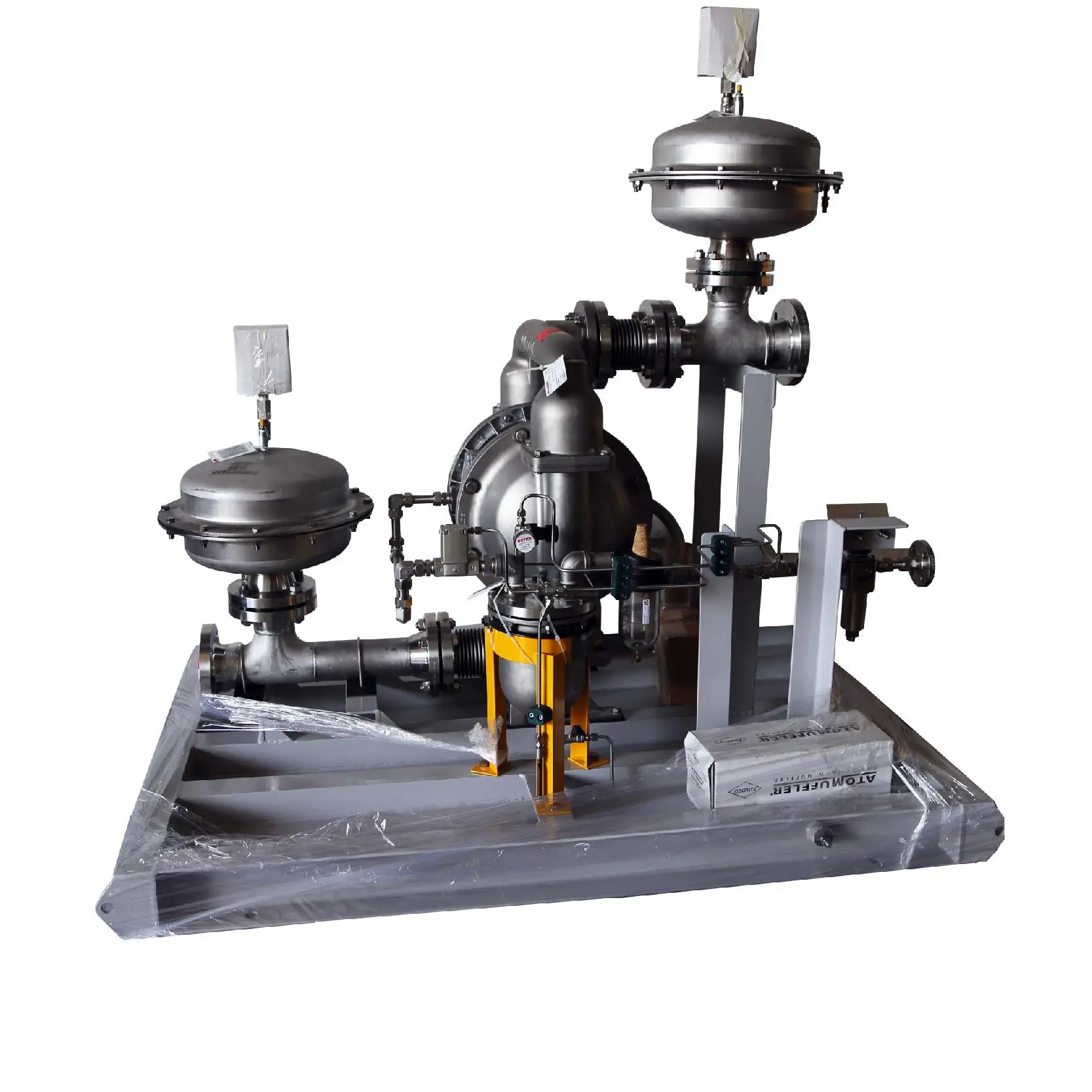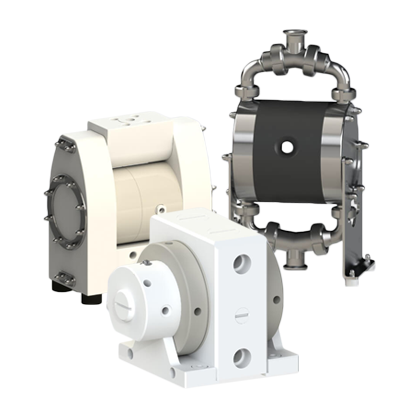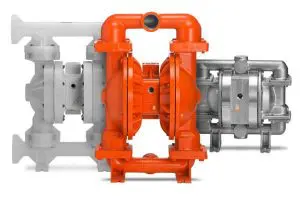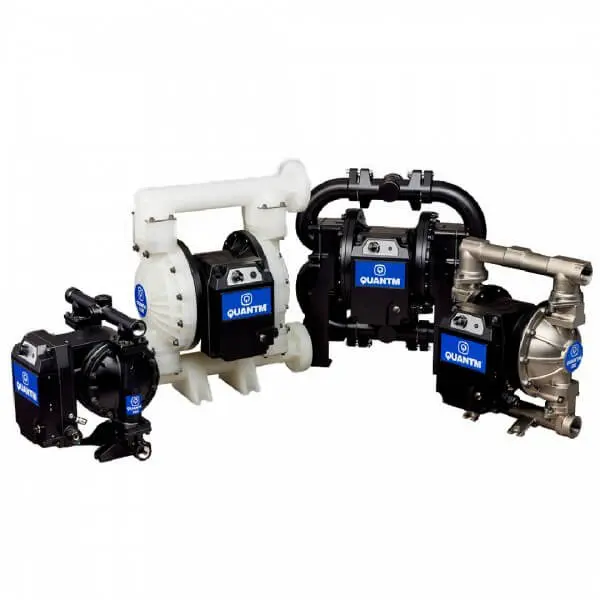Diaphragm Pump
A highly versatile type of pump, able to move nearby all kinds of liquid without needing electricity
AODD pumps (first invented by Jim Wilden in 1955) get frequently used for a wide variety of transfer applications, and has the ability to handle a range of substances including liquids with high solid content (e.g. construction sludge and slurries), semi-solids, as well as abrasive and shear sensitive substances.
They also have the advantage of being powered solely with compressed air, allowing their use in situations where electric power sources are not available, or nearby explosive or flammable substances.
A durable and reliable pump
In addition, diaphragm pumps contain fewer moving parts (e.g. pistons, rotors) which minimise the effect of wear-and-tear and allow for continued pumping efficiency over time, with minimal maintenance needed.
AODD pumps work through a core consisting of two diaphragms that function solely using compressed air. A shuttle valve that sends air alternates between the two diaphragms, with each diaphragm having its own set of ball check valves.
Overall, AODD pumps are reliable, robust, easy to service, and are affordable. They are often used as general-purpose devices within many different industries.
Quality Air Operated Double Diaphragm Pumps In Singapore
When you find yourself in a situation that precludes most electric-powered pumping solutions, or if you are simply looking for a robust and versatile pump that can be relied upon to do the job anywhere, our air operated diaphragm pumps are your best option.
Among our catalogue are several models from the respected Wilden brand, among others.
Winston Engineering is ready to serve as a supplier, installer, and servicer of diaphragm pumps for any purpose. Our team of skilled and professional engineers will ensure that your pumping needs are met with no compromise in quality.
Contact us for more information.
FAQ
Why are diaphragm pumps the preferred choice for handling corrosive, abrasive, or highly viscous fluids?
Diaphragm pumps excel in difficult applications because they eliminate the wear parts common in other pump types, ensuring high chemical resistance and low shear.
- Chemical Compatibility: The pumping mechanism isolates the fluid from the drive components, meaning only the wetted parts (diaphragms, ball valves, and manifolds) come into contact with the fluid. This allows for a wide range of materials (PP, PVDF, Stainless Steel, Hastelloy) to be selected based on a chemical compatibility chart, effectively neutralising the threat of chemical attack.
- Abrasive Handling: They can handle fluids containing high solids or particulates (like sludge or ceramic slurry) without damage, as they do not have close-tolerance seals, impellers, or rotors that would rapidly wear out
- Low Shear: The gentle, reciprocating action is ideal for shear-sensitive fluids (e.g., paints, latex, glues), preventing the product from being damaged or altered during transfer.
When is it more cost-effective to choose energy-efficient Electric Diaphragm Pumps (EODD) over AODD in Singapore?
While the initial cost of an air operated diaphragm pump is lower, the long-term cost of running an EODD is significantly lower, making it the more cost-effective choice for continuous, high-duty cycles.
- Energy Consumption: Running an AODD pump requires continuous, expensive compressed air. EODD pumps use highly efficient electric motors (often matching the efficiency of the best electric diaphragm pumps or even exceeding IE3/IE4 motors). For a 24/7 application, switching from AODD to EODD can result in an estimated 70% reduction in energy operating costs.
- ROI: With the high cost of electricity in Singapore, the return on investment (ROI) for an EODD can be achieved quickly depending on the application and run time.
- Noise Reduction: EODD pumps operate much more quietly, which is a major benefit for plants located in industrial parks or near residential areas in dense urban environments like Singapore.
How does the unique operation of an AODD pump allow it to be safely used in hazardous or explosion-proof areas?
An air operated diaphragm pump is inherently safe for use in hazardous (classified) areas because it is driven by compressed air, eliminating the need for an electric motor, wiring, and associated ignition sources.
- No Spark Risk: Since there are no electrical components, switches, or motors, the pump itself cannot generate a spark, making it compliant with strict explosion-proof requirements (e.g., ATEX/IECEx) for Zones 1 or 2.
- Over-Pressure Safety: AODD pumps can simply stall against a closed valve or back pressure without damage, unlike many electric pumps that risk overheating or mechanical failure. This passive safety feature is critical when handling dangerous chemicals.
- Dry-Running: They can run dry indefinitely without catastrophic failure, providing an additional layer of safety when chemical transfer tanks unexpectedly run empty.
Who provides the essential after-sales support, installation, and commissioning for a diaphragm pump in Singapore?
The reliability of any diaphragm pump in Singapore is heavily dependent on the local partner's ability to provide technical support and minimise downtime. Winston Engineering is that partner, offering the following critical services:
- Local Expertise: A local distributor provides technicians trained directly by the manufacturer for official installation and commissioning, ensuring the pump operates to factory specification from day one.
- Spare Parts Inventory: The biggest cause of unexpected downtime is a lack of critical spare parts (diaphragms, ball valves, and seats). A local supplier maintains a readily accessible inventory of kits for common models, reducing downtime from several weeks (for international shipping) to less than 48 hours.
- Maintenance Contracts: Comprehensive service and maintenance packages are offered to monitor pump performance, schedule proactive diaphragm replacement based on hours run, and prevent unscheduled failures caused by common issues like air valve contamination or worn components.








